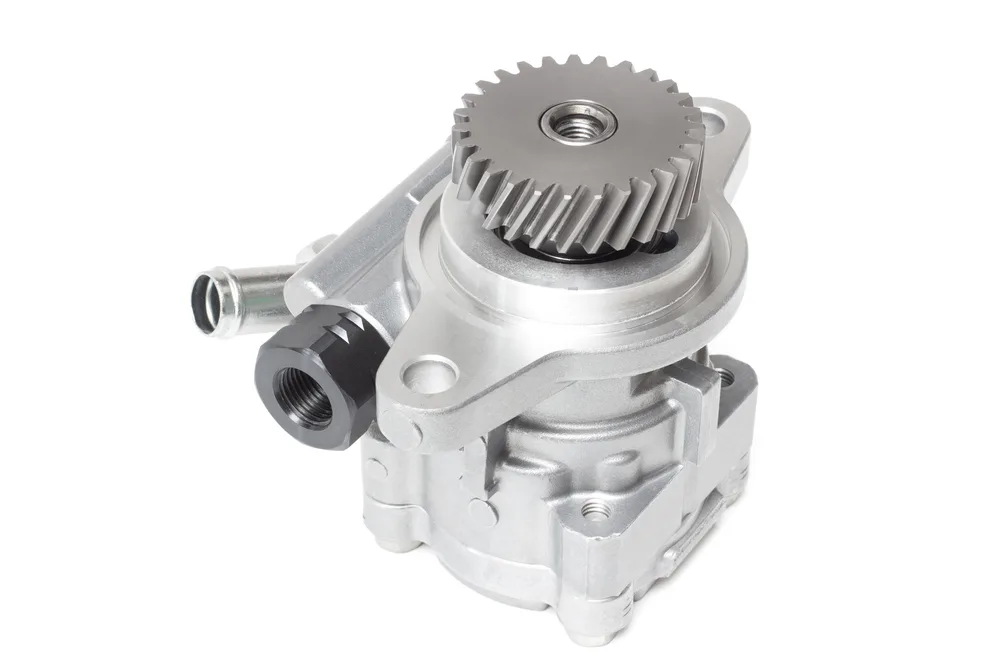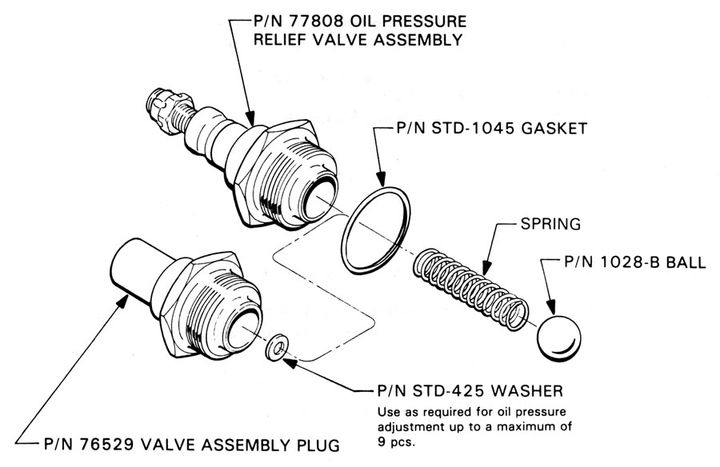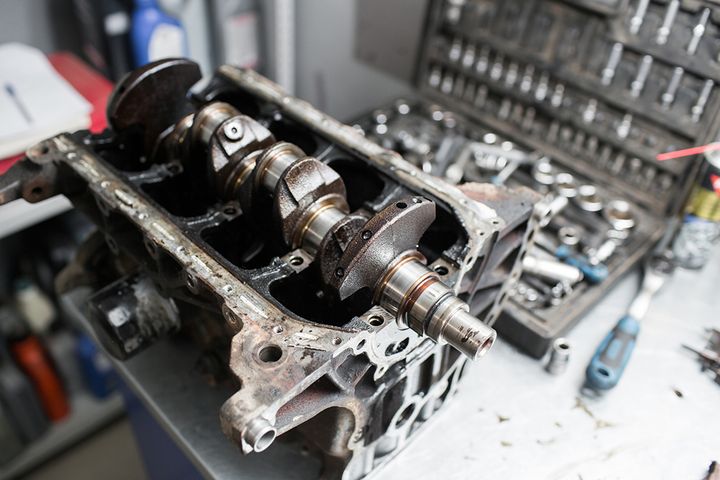


Oil pressure relief valves are an essential component in an engine's lubrication system. They are designed to regulate and maintain the optimal oil pressure within the engine, ensuring proper lubrication and preventing potential damage caused by excessive pressure buildup.
In this article, I'll share my insights and experiences, guiding you through the causes, symptoms, diagnosis, and repair process of a stuck oil pressure relief valve. Buckle up, because this is a journey that will take us deep into the heart of an engine's lubrication system.

Before we dive into the nitty-gritty of a stuck valve, let's first understand its purpose. The oil pressure relief valve is a small, yet vital component that acts as a safety mechanism within the engine's lubrication system. Its primary function is to regulate the oil pressure by allowing excess oil to bypass back into the oil pan when the pressure exceeds a predetermined threshold.
Think of it as a pressure release valve for your engine's circulatory system. Without it, the oil pressure could build up to dangerous levels, potentially causing catastrophic damage to various engine components.
| Component | Function |
|---|---|
| Oil Pressure Relief Valve | Regulates oil pressure by allowing excess oil to bypass back into the oil pan |
| Oil Pan | Reservoir that holds the engine's oil supply |
| Oil Pump | Circulates oil throughout the engine's lubrication system |
Over the years, I've encountered several common causes that can lead to a stuck oil pressure relief valve. Here are the main offenders:
Debris and Sludge Buildup: As engines age, sludge and debris can accumulate within the lubrication system, preventing the valve from moving freely. This buildup can cause the valve to stick in either the open or closed position, disrupting the delicate balance of oil pressure.
Wear and Burrs: Like any mechanical component, the relief valve and its bore can experience wear and tear over time. Burrs or scoring on the valve or bore can cause it to stick, preventing it from functioning properly.
Thermal Expansion: When an engine gets hot, the metal components expand. In some cases, this thermal expansion can cause the valve to seize, preventing it from opening or closing as intended.
| Cause | Description |
|---|---|
| Debris and Sludge Buildup | Accumulation of contaminants preventing valve movement |
| Wear and Burrs | Wear and tear on valve or bore causing sticking |
| Thermal Expansion | Metal expansion due to heat causing valve seizure |
Now, let's explore the potential consequences of a stuck oil pressure relief valve, which can be catastrophic if left unaddressed.
If the relief valve sticks in the open position, it will allow excessive oil to bypass back into the oil pan, resulting in low oil pressure. This starves the engine of crucial lubrication, leading to increased friction, accelerated wear, and potentially catastrophic bearing failure. Trust me; you don't want to experience the sound of an engine seizing due to a lack of lubrication.
The consequences of a stuck open valve can be severe:
Low oil pressure
Lack of lubrication
Increased friction and wear
Potential bearing failure
Engine seizure
On the other hand, if the valve sticks in the closed position, it will prevent oil from bypassing back into the pan. This causes an extreme buildup of oil pressure, which can lead to a variety of issues. Imagine the pressure becoming so high that it blows out oil galley plugs, damages the oil filter gasket, or even cracks the engine block itself. It's a scenario that would make any mechanic's heart skip a beat.
A stuck closed valve can result in:
Extremely high oil pressure
Blown oil galley plugs
Damaged oil filter gasket
Cracked engine block
As a mechanic, diagnosing a stuck oil pressure relief valve requires a combination of visual inspection and careful monitoring of the oil pressure gauge. Here's how I approach it:
Oil Pressure Gauge: The first step is to observe the oil pressure gauge. If the pressure is low when the engine is hot, it could indicate a stuck open valve. Conversely, if the pressure is excessively high, it might be a sign of a stuck closed valve.
Visual Inspection: With the valve cover removed, I carefully observe the relief valve's operation while the engine is running. If the valve appears stuck or isn't moving as it should, it's a clear indication of an issue.
Valve Removal and Inspection: For a stuck closed valve, I'll remove the valve and inspect it for debris, burrs, or scoring in the bore. This hands-on approach allows me to identify the root cause and determine the best course of action.
| Diagnostic Method | Description |
|---|---|
| Oil Pressure Gauge | Monitor oil pressure for abnormal readings |
| Visual Inspection | Observe valve operation with valve cover removed |
| Valve Removal and Inspection | Inspect valve and bore for debris, burrs, or scoring |
Once the issue has been diagnosed, it's time to roll up our sleeves and get to work. Here's how I approach the repair process:

Remove the oil pump and relief valve assembly.
Thoroughly clean the valve and bore, polishing any burrs or rough surfaces.
If the valve is excessively worn, replace it or the entire pump assembly.
Carefully remove the stuck valve, which may require tapping the threads and pulling it out with a bolt.
Thoroughly clean all debris from the engine, ensuring no contaminants remain.
Replace the valve and/or pump if they are damaged.
To prevent future issues, I always emphasize the importance of regular maintenance and using high-quality oils and filters. Avoiding engine overheating and inspecting the relief valve during routine maintenance can also go a long way in preventing valve-related problems.
Change engine oil and filter regularly
Use high-quality oils and filters
Avoid engine overheating
Inspect relief valve during routine maintenance
While replacing a relief valve itself is relatively inexpensive, ranging from $20 to $100, neglecting the issue can quickly escalate the costs. If the oil pump needs replacement, you're looking at $200 to $500 in labor and parts. However, the real financial burden comes when internal engine damage occurs due to a lack of lubrication.
| Repair | Cost Range |
|---|---|
| Relief Valve Replacement | $20 - $100 |
| Oil Pump Replacement | $200 - $500 |
| Engine Rebuild (due to lack of lubrication) | $2,000 - $5,000+ |
In severe cases, an engine rebuild may be necessary, which can cost anywhere from $2,000 to $5,000 or more, depending on the make and model of the vehicle. Trust me; you don't want to find yourself in that situation.
As I've learned through experience, a stuck oil pressure relief valve is no laughing matter. This seemingly insignificant component can wreak havoc on an engine if left unchecked. By understanding the causes, symptoms, and repair processes, you can take proactive measures to avoid costly repairs and ensure the longevity of your vehicle's engine.
Remember, preventive maintenance is key, and catching the issue early can save you from a world of headaches and financial strain. So, the next time you hear that telltale knocking or notice unusual oil pressure readings, don't hesitate to have your trusty mechanic take a closer look. Your engine will thank you for it.
The oil pressure relief valve regulates oil pressure by allowing excess oil to bypass back into the oil pan when the pressure exceeds a predetermined threshold. It acts as a safety mechanism to prevent excessive oil pressure buildup.
Debris and sludge buildup, wear and burrs on the valve or bore, and thermal expansion can cause the relief valve to stick in either the open or closed position.
A stuck open valve allows too much oil to bypass back into the oil pan, resulting in low oil pressure, lack of lubrication, increased friction and wear, and potential bearing failure or engine seizure.
A stuck closed valve prevents oil from bypassing, causing an extreme buildup of oil pressure that can blow out oil galley plugs, damage the oil filter gasket, or even crack the engine block.
Monitor the oil pressure gauge, visually inspect the valve's operation with the valve cover removed, and remove the valve to check for debris, burrs, or scoring.
Remove the oil pump and relief valve assembly, thoroughly clean the valve and bore, polish any burrs or rough surfaces, and replace the valve or pump assembly if excessively worn.
Carefully remove the stuck valve, which may require tapping the threads and pulling it out with a bolt, thoroughly clean all debris, and replace the valve and/or pump if damaged.
Regular maintenance, using high-quality oils and filters, avoiding engine overheating, and inspecting the relief valve during routine maintenance can help prevent valve-related problems.
Neglecting the issue can escalate costs from a relatively inexpensive valve replacement ($20-$100) to an oil pump replacement ($200-$500) or even an engine rebuild ($2,000-$5,000+) if internal damage occurs.
Some mechanics have tried using compressed air to dislodge a stuck relief valve, either by removing the oil filter and rigging a fitting or through the oil pickup tube in the oil pan, but success rates vary.

Sarah isn't your average gearhead. With a double major in Mechanical Engineering and Automotive Technology, she dived straight into the world of car repair. After 15 years of turning wrenches at dealerships and independent shops, Sarah joined MICDOT to share her expertise and passion for making cars run like new. Her in-depth knowledge and knack for explaining complex issues in simple terms make her a valuable asset to our team.













